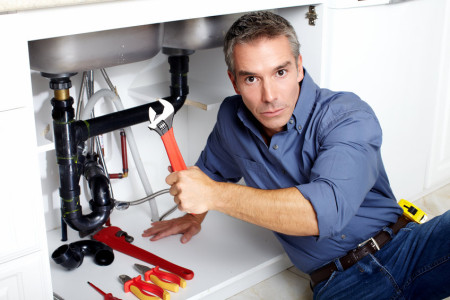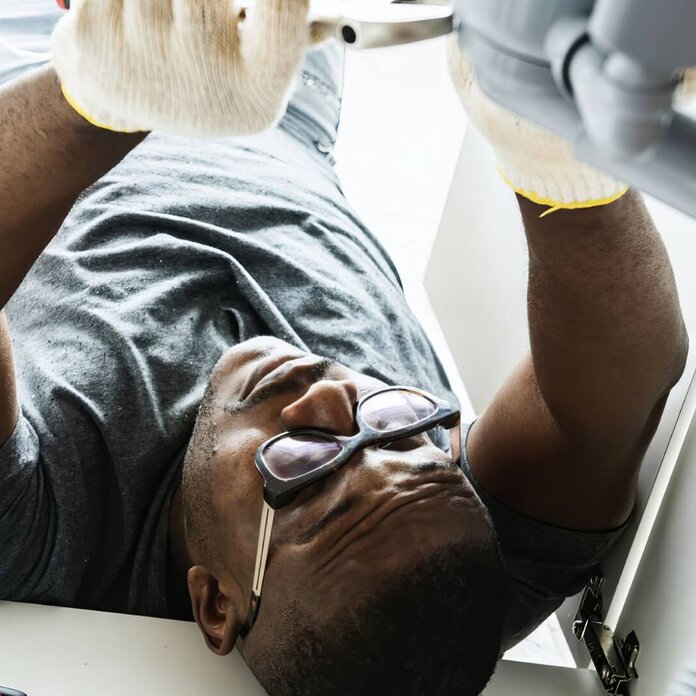Fast Solutions for Urgent Plumbing Issues: What to Do Until A Plumber Arrives
Fast Solutions for Urgent Plumbing Issues: What to Do Until A Plumber Arrives
Blog Article
Everybody has got their own unique assumption on the subject of What to Do During a Plumbing Emergency.

Plumbing emergencies can strike at any moment, triggering tension and potential damage to your home. Whether it's a burst pipeline, a stopped up drain, or a leaky tap, recognizing exactly how to handle the situation until a specialist plumbing technician arrives can save you from more issues. This short article offers essential emergency situation pipes suggestions to help you minimize damage and restore control throughout a pipes crisis.
Turn Off the Water
The primary step in any pipes emergency situation is to shut off the water. For local issues, such as a dripping faucet or bathroom, turn off the shutoff near the fixture. When it comes to a major leakage or ruptured pipe, situate your home's main water shut-off shutoff and turn it off immediately. Recognizing the location of these shutoffs in advance can conserve useful time during an emergency situation.
Shut Off Your Hot Water Heater
In certain emergency situations, such as a burst pipeline, it's a good idea to shut down your water heater. This protects against overheating or damages to the unit when water quits flowing. Switch off the power supply to the water heater (electrical or gas) and let it cool off to stay clear of prospective threats.
Temporarily Quit a Burst Pipe
A ruptured pipe can cause significant water damage in mins. To reduce the concern:
Call a professional plumbing promptly to address the issue completely.
Have an Emergency Situation Plumbing Set
Prepare a fundamental pipes emergency kit to manage small concerns effectively. Your set must consist of:
Having these tools available can make a considerable distinction in your capacity to take care of emergencies.
Unclog Drains Safely.
A stopped up drain can be an aggravating and messy issue. Below's exactly how to tackle it:.
If these methods don't function, avoid using too much force, as it might intensify the clog.
Handle Overflowing Toilets.
An overflowing toilet can trigger immediate mayhem. Right here's what you ought to do:.
Address Little Leakages with Momentary Fixes.
Small leakages can quickly become substantial troubles if left unchecked. Utilize these momentary solutions till professional help shows up:.
While these repairs aren't long-term, they can help decrease water loss and damages.
Handle Frozen Pipeline Meticulously.
In cooler environments, icy pipelines are an usual emergency situation. If you presume an icy pipe:.
Know When to Call a Specialist.
While quick fixes can assist momentarily, specific pipes issues call for prompt expert focus. Call a plumbing technician if:.
Immediately contacting a specialist guarantees the problem is resolved properly and protects against additional complications.
Avoid More Damages.
Taking quick activity to reduce damages can conserve you money and time in the long run. Right here's just how:.
Final thought.
Pipes emergency situations can be frustrating, yet with the appropriate knowledge and tools, you can manage the situation efficiently up until assistance shows up. By shutting off the water, resolving tiny leakages, and making use of short-lived solutions, you can decrease damages and maintain your home safe. Bear in mind, these pointers are short-lived remedies; constantly seek advice from an accredited plumbing professional to manage the source of the issue. Preparation and quick thinking are your ideal allies in any kind of pipes emergency situation.
Minimizing Damage: What to Do in a Plumbing Emergency
Imagine walking into your home only to find water gushing from a burst pipe. It can be a stressful situation, but knowing how to act quickly can make a big difference.
In a plumbing emergency, every second counts. The secret is to stay calm and act immediately to minimize damage before professional help arrives.
This article will guide you through what to do in those crucial moments. It’ll help you protect your home and avoid costly repairs. Dig in for practical, easy-to-follow steps to help you stay in control when plumbing problems strike!
Contact a Professional Plumber
In most cases, you’ll need a licensed plumber’s expertise to address the problem’s root cause and make permanent repairs. They have the expertise to spot the source of the problem and make the necessary repairs to fix the issue for good.
When calling, clearly explain the problem and what steps you’ve already taken to manage the emergency situation. This will help them prepare and bring the right tools to handle your plumbing problems.
It’s reassuring to know that many plumbers offer 24/7 emergency services, so don’t hesitate to call, even late at night or on weekends. The faster you can get a professional to assess the damage, the better your chances of minimizing long-term plumbing issues.
Plus, it’s nice to know that the plumbers you’ve called actually enjoy solving your plumbing problems and getting you back to your normal life. Their skills and passion for helping ensure you’ll have peace of mind when they fix everything correctly.
Stay Calm and Assess the Situation
When a plumbing emergency happens, the most crucial thing is to stay calm. Panicking will make it harder to think clearly and take the proper steps. So, instead of panicking, take a deep breath and focus on assessing the situation. This will help you understand what you’re dealing with and how serious the problem is.
Start by asking yourself a few questions: Where is the water coming from? Is it still flowing, or has it stopped? Is the problem limited to one spot, or is it affecting multiple areas of your home? These questions will give you a better idea of how to move forward.
Once you assess the situation, you can decide whether you can handle it on your own or if it’s time to call an emergency plumber. Understanding the severity of the issues will help you determine your next steps and prevent further damage.
Shut Off the Water Supply
Shutting off the water supply is a quick and effective way to prevent further damage during a plumbing emergency. This step is essential, especially when dealing with a burst pipe or a major leak. Stopping the water flow can prevent the issue from worsening and reduce the amount of water entering your home.
To do this, find your home’s main water valve, often located in the basement, garage, or near the water meter. Turn the main water valve clockwise to stop the water flow throughout the house. This will help control the situation until you fix the problem.
If the issue is in a specific fixture, such as a sink or toilet, you can turn off the water directly at the fixture. A small valve is usually located behind or beneath it, allowing you to stop the water only in that area. This targeted approach can help limit the damage.
Drain the Water
After shutting off the water supply, draining the remaining water is the next step. This helps reduce pressure on the pipes and prevents any additional flooding.
To drain all the water in your plumbing system, turn on all the faucets in your home, both hot and cold, to release the water still trapped in the system. Don’t forget to flush the toilets to empty the tanks and bowls.
If there’s a serious flood, you must act fast to remove any standing water. Use towels, mops, or a wet/dry vacuum to soak up the excess water. The quicker you can remove it, the less damage it’ll cause to your floors, walls, and furniture.
Taking this step will help protect your home and make it easier for you to make repairs later on. Keeping the area dry will also reduce extensive water damage, such as mold or structural damage.
Check for Electrical Hazards
Plumbing emergencies that involve excessive water can create serious electrical hazards. Since water and electricity are dangerous, taking suitable safety precautions is vital for ensuring safety. The last thing you want is to risk injury in an even more stressful situation.
Before entering any flooded area, turn off the electricity in that part of your home. You can do this by switching off the circuit breaker for the affected area. If it’s unsafe to access the breaker due to flooding, avoid the area and wait for professional help.
Most importantly, never touch electrical outlets, appliances, or switches if you’re standing in the water. Always prioritize your safety when dealing with water and electricity, as it’s better to be cautious and call for help if needed.
Prevent Future Plumbing Emergencies
While some plumbing emergencies are unavoidable, there are simple steps you can take to lower the risk of future problems. Regular maintenance and inspections can help catch minor issues before they become bigger, more expensive repairs. Staying on top of this upkeep can make a big difference in preventing major plumbing disasters.
Also, inspect your pipes regularly for any signs of damage, such as rust or water leaks. If you notice any issues, replacing old or worn pipes can prevent future bursts. It’s also helpful to monitor your water bill—any sudden spikes could point to a hidden leak.
Most importantly, be mindful of what goes down your drains. Avoid pouring grease or other clogging materials, and use drain screens to block debris. During winter, insulating your pipes can prevent freezing, a common cause of burst pipes. When you address these minor issues, you can avoid the stress of a plumbing emergency in the future.
Conclusion
Dealing with a plumbing emergency can be overwhelming, but taking quick and thoughtful action can help minimize the damage. Staying calm, acting quickly, and seeking professional help will help protect your home and avoid costly repairs. Keep in mind that prevention is key. Regular maintenance and inspections can help prevent future plumbing disasters. So, keep an eye on your pipes, avoid clogging drains, and don’t hesitate to call a plumber for any issues.
https://thearchitectsdiary.com/minimizing-damage-what-to-do-in-a-plumbing-emergency/

I was shown that editorial on Expert Tips for Emergency Plumbing Repairs from a friend on a different web blog. Sharing is caring. Helping people is fun. Thanks so much for going through it.
Click Here Report this page